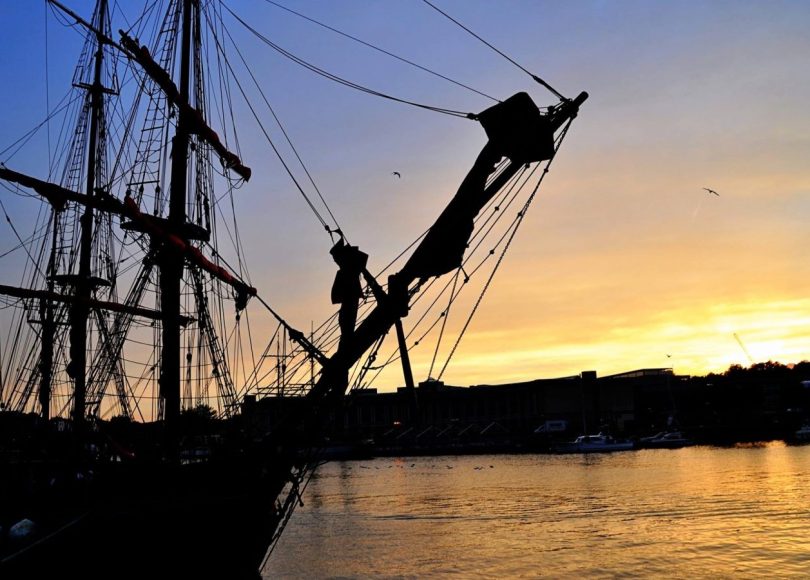Society of the Divine Word, St. Mary-on-the-Quay Presbytery,
20, Colston Street, Bristol BS1 5AE
UNITED KINGDOM. Telp. +44 117 9264702, Email: bristol.stmaryonthequay@parish.cliftondiocese.com, Website:www.stmaryonthequay.com
“St Mary-on-the-Quay: Bristol’s Beacon of Faith and History”
In the heart of Bristol, St Mary-on-the-Quay stands as a testament to the enduring history of the Catholic Church in this vibrant city. Bishop Mervyn Alexander’s words resonate: “St Mary-on-the-Quay is central to the history of the Catholic Church in Bristol.” This historic church, apart from the pre-Reformation St James Priory, proudly holds the title of Bristol’s oldest Catholic Church, its foundations dating back to 1840 when it was constructed by the Irvingites for £15,000.
However, the winds of change blew swiftly, and the maintenance of the church became an expensive endeavor for its original builders. It was then that the Franciscan, Fr Patrick O’Farrell, saw an opportunity to secure the church for the Catholics of Bristol, purchasing it for a humble £5000. With this move, he became the church’s first parish priest. The neo-classical façade of St Mary-on-the-Quay, noted for its architectural beauty, was deemed, at the time of its opening by Bishop Baines in 1843, as the most impressive Catholic Church in England outside London, a distinction marked by its Grade II* listed status.
In the early years, a dilemma faced Bristol’s Catholics—two places of worship, St Mary’s and St Joseph’s Chapel, existed a mere two hundred yards apart. Such proximity seemed unsatisfactory. Furthermore, tensions brewed within the Catholic community regarding who should manage the city-center church. Bishop Clifford took the initiative to resolve these issues in 1861, making St Mary’s the parish church under the care of the Jesuits, while St Joseph’s was repurposed into St Mary’s schools. By 1871, St Mary-on-the-Quay officially returned to Jesuit administration when the Society of Jesus purchased it for £2,700.
The original significance of the church’s name, ‘on-the-Quay,’ faded as the Frome River, once passing by the church’s frontage, was covered in 1891 to accommodate growing road traffic. The church no longer faced the waters of the harbor but rather the Cenotaph and the hustle of cars.
In the midst of World War I, 545 parishioners joined the forces, with sixty-seven making the ultimate sacrifice. Their names are eternally memorialized on a poignant brass tablet outside the church, with the first name being that of George Archer-Shee, a real-life figure behind Terence Rattigan’s famous play, “The Winslow Boy.”
Despite Bristol’s heavy bombing during World War II, St Mary’s remained remarkably untouched. However, post-war developments, such as housing estates on the city’s outskirts, led to the departure of Catholic families from the city center. By 1971, St Mary’s schools had closed, and students were accommodated in Catholic schools elsewhere. Financial constraints eventually jeopardized the church’s maintenance, and in 1980, it faced closure. A determined community rallied, raising funds and securing a grant from the Society of Jesus to ensure the church’s survival. In 1993, St Mary-on-the-Quay celebrated its one hundred and fiftieth anniversary, a testament to unwavering devotion.
In 1996, staffing issues led to the withdrawal of the Society of Jesus from Bristol, with St Mary’s passing into the care of diocesan priests. Despite various transitions, the church persevered. Renovations, including the installation of a lift for accessibility, were completed, ensuring that the church remained a welcoming place for all.
In 2004, an unexpected development saw the arrival of the Divine Word Missionaries to take over St Mary-on-the-Quay, ushering in a new chapter in the church’s history. Their international mission focused on inclusiveness and dialogue, bringing a diverse congregation to the church.
St Mary’s, with its rich musical tradition and the enduring dedication of its congregation, continued to evolve. The refurbishment project in 2009 breathed new life into the church, restoring its splendor.
Today, St Mary-on-the-Quay remains a spiritual hub in Bristol, welcoming individuals from various backgrounds and nationalities.
As history unfolds, this venerable church stands as a symbol of resilience and unwavering faith, cherished by many who consider it their spiritual home, even from afar. St Mary-on-the-Quay continues to be a place where history meets devotion, offering solace and inspiration to all who cross its threshold.


